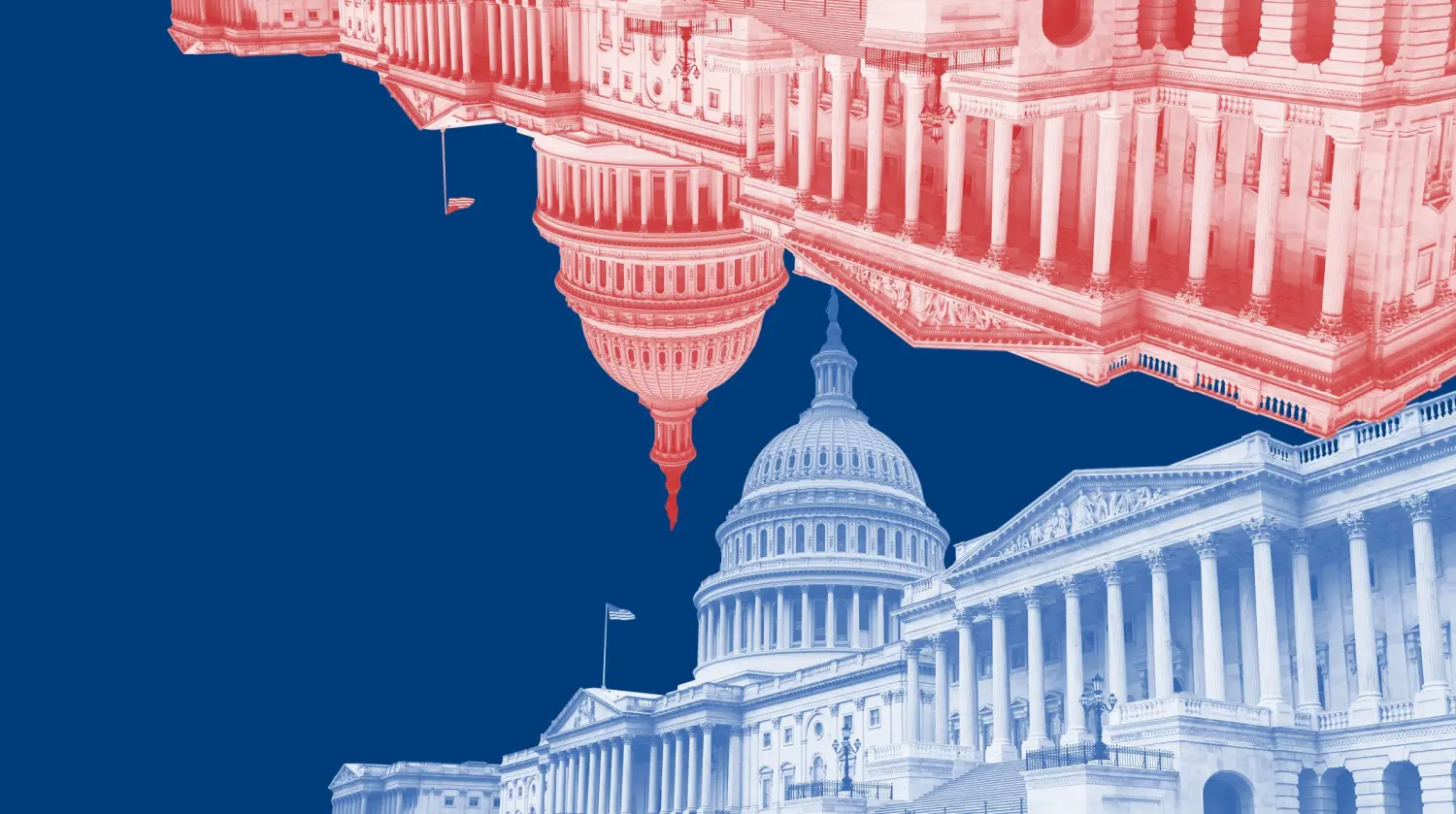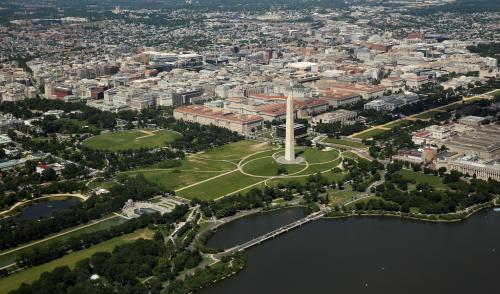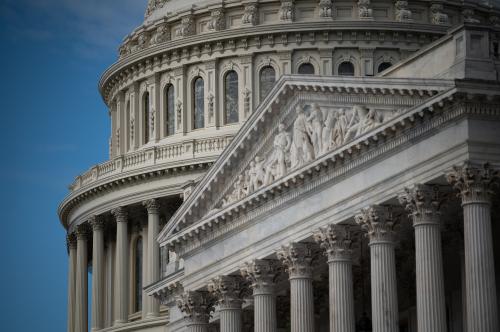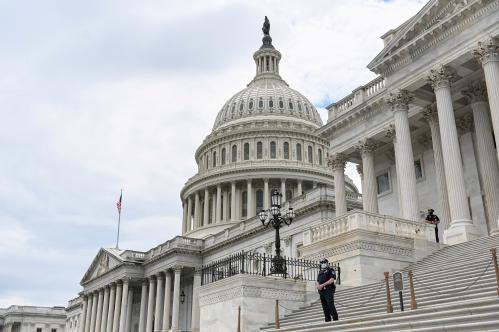This post is part of a series on the need for government reform and how to get it done. For more on this topic, visit the series page.
The Trump administration has made little effort to honor the president’s promises to make government work. Employee morale is down, public distrust is up, and the swamp has never been so vibrant. Americans know trust in the federal government has declined, believe it is affecting government’s ability to act, blame government performance for a substantial share of the decline, and even say it should be repaired. At the same time, Americans say the federal government gets the respect it deserves.[1]
The failure to address the need for government reform feeds the cycle of disappointment that threatens the nation. As my colleagues, Will Howell and Terry Moe argue in Presidents, Populism, and the Crisis of Democracy, Trump’s rise to power is more a symptom than a cause of the current populist crisis. New policies for economic and social renewal would help stem the threat, but such renewal would only succeed with a return to the faithful execution of the laws. Hence, Howell and Moe’s call to reform includes a long list of standard bureaucratic reforms such as reducing the number of political appointees and strengthening the civil service.[2]
Trust in government is also related to demographic, economic, and social change, but appears to be highly responsive to government breakdowns. Even if an occasional breakdown can be justified as the price of ambition, the recent acceleration creates a sense that the federal government cannot be trusted to meet minimal expectations for reliability and care. The sluggish response to COVID-19 will long be remembered as one of the federal government’s greatest breakdowns, but it also triggered a cascade of smaller breakdowns as beleaguered agencies struggled to perform seemingly simple tasks such as printing and mailing stimulus checks to people.
Moreover, breakdowns often return to the front page when blue-ribbon investigations, court cases, histories, and even books about the government’s greatest failures reach the news again. Past breakdowns and the failures to fix the underlying problems are also relitigated when new breakdowns are triggered by the same or similar causes. (Read through the 70 post-2001 breakdowns here and the COVID-19 crisis becomes a failure foretold by previous failures.[3]) These include the failure of imagination that led to the 9/11 attacks, the depleted supply-chain that undermined the response to Hurricanes Katrina and Maria, the “pervasive permissiveness” toward risky financial industry behaviors that sparked the Great Recession, the denial that preceded the Challenger and Columbia tragedies, and the overpromising that turned what should have been the agile launch of the Obamacare website into a nightmare of frozen screens.
The total number of highly-visible breakdowns may seem small, but it accelerated as the federal bureaucracy strained to do more with less, with aging government systems and political turmoil. The pre-2001 administrations averaged just 1.4 breakdowns per year from 1986-2000, while the post-2001 administrations have averaged 3.5 to date. Compared administration-to-administration, the Trump administration has more than tripled the number of breakdowns in George H.W. Bush’s first and only term, while the three post-2001 presidents have more than doubled their predecessors. Figure 1 shows the number of breakdowns by presidential administration.
The rising number of highly-visible breakdowns is almost certainly tied to media polarization. Government breakdowns under Democratic control may have produced higher ratings at Fox, just as breakdowns under Republican control may have been a boon for MSNBC and CNN, both of which could be fueling greater public interest in stories about failure.
Notwithstanding the partisan incentives that might underpin the pursuit of visibility at CNN, Fox, or MSNBC, there is good reason to blame decades of neglect for the increase, be it in the failure to upgrade government management systems, the desperate need for civil service reform, the death of government reorganization as a tool for increasing efficiency, the budgetary cliff-diving that led to shutdowns and annual uncertainty, and the bureaucratic layers discussed in the fourth piece of this series.
As Figure 1 shows, the same data tell a different story when they are divided into breakdowns per year. Suddenly, what looks like a peak during the Obama administration turns into an steady rise from 1.6 breakdowns per year during Reagan’s second term to 4.3 breakdowns per year under Trump.
Democratic nominee Joe Biden and his team would be well advised to note the recent acceleration in the number of breakdowns per year—and be reminded of those that occurred during his tenure as vice president. The acceleration makes the Trump administration more vulnerable to criticism, but also should raise warnings about overpromising in the absence of a government reform agenda—something Mr. Trump did during the 2016 campaign and as president and Mr. Biden is doing in the 2020 campaign.
President Trump has himself to blame for any backlash against his long list of first-term government breakdowns. Having reassured his party in 2016 that he “alone could fix it,” Trump showed little interest in doing so. Administrative experts may disagree on how Trump set a record in first-term breakdowns, but he alone must claim it. Absent action to repair the underlying causes of failure that each president inherits, the blame goes to the incumbent.
[1] Seventy-five percent of the Americans interviewed by the Pew Research Center in December, 2018, 64% said low trust in the federal government made it harder to solve problems, 36% volunteered in written open-ended answers that the federal government’s performance, or the lack thereof was to blame for the decline, and 68% said it was very important to repair the decline. See Lee Rainie and Andrew Perrin, “Key findings about Americans declining trust in government and each other,” Pew Research Center, July 22, 2019.
[2] William G. Howell, and Terry M. Moe, Presidents, Populism, and the Crisis of Democracy, Chicago: University of Chicago Press, 2020; see also the 2019 Knight Commission on Trust, Media and Democracy for a review of the data and effects,
[3] In my list of highly visible government breakdowns, I build on the defunct Pew Research Center News Interest Index. Launched in 1986, the original index was designed to track public attention to “stories in the news” over time. Respondents were read a list of stories covered by news organizations in a specific period and asked whether they followed each of the stories on the list very closely, fairly closely, not closely, or not at all closely.
The question was first used by the Times Mirror Center for the People & the Press in July 1986 and remained in the queue when the Times Mirror Center became the Pew Research Center in 1996 and remained in the inventory until a three-year hiatus began in late summer 2015. The current question asks respondents “How much, if anything, have you heard or read about each of the following stories that have been in the news recently?”
I used the 1986-2015 data in my 2015 Volcker Alliance report, Vision + Execution = Faithful Execution. I reconstructed the Pew survey question to the extent I could by compiling lists of major news stories such as the AP’s annual survey of U.S. editors and news directors. I then searched for polling data on each story and selected the most visible stories for further review. The Volkswagen emissions-testing scandal was the first news story that showed up on my list after the Pew Research Center suspended the news interest question.
I began adding to the index on my own in 2010 by following high-visibility new stories that involved a federal government breakdown that was being followed very or fairly closely by at least 30 percent of respondents. I made the judgment about whether a given story revealed a significant federal government failure based on news stories, congressional investigations, and other available information about the federal role in the event. Readers should note that the recent list of breakdowns is solely based on my judgment about what constitutes a breakdown. I define a breakdown as a time-specific event that reveals an administrative failure in how the federal government executed a law. I readily accepted poorly crafted policy as a cause of such failures, but focused on execution as I read stories in the news.
For example, the Federal Aviation Administration (FAA) did not cause the Boeing 737 Max accidents—the design flaws, cost-cutting, and regulatory evasion belongs to Boeing. However, as the House Transportation and Infrastructure Committee recently reported, the two crashes that killed 346 people reflected a “horrific combination” of failure that included the FAA’s weak oversight and improper regulatory delegation. See Niraj Chokshi, “House Report Condemns Boeing and F.A.A. in 737 Max Disasters,” New York Times, September 16, 2020.
The Brookings Institution is committed to quality, independence, and impact.
We are supported by a diverse array of funders. In line with our values and policies, each Brookings publication represents the sole views of its author(s).









Commentary
Federal breakdowns are accelerating
September 23, 2020